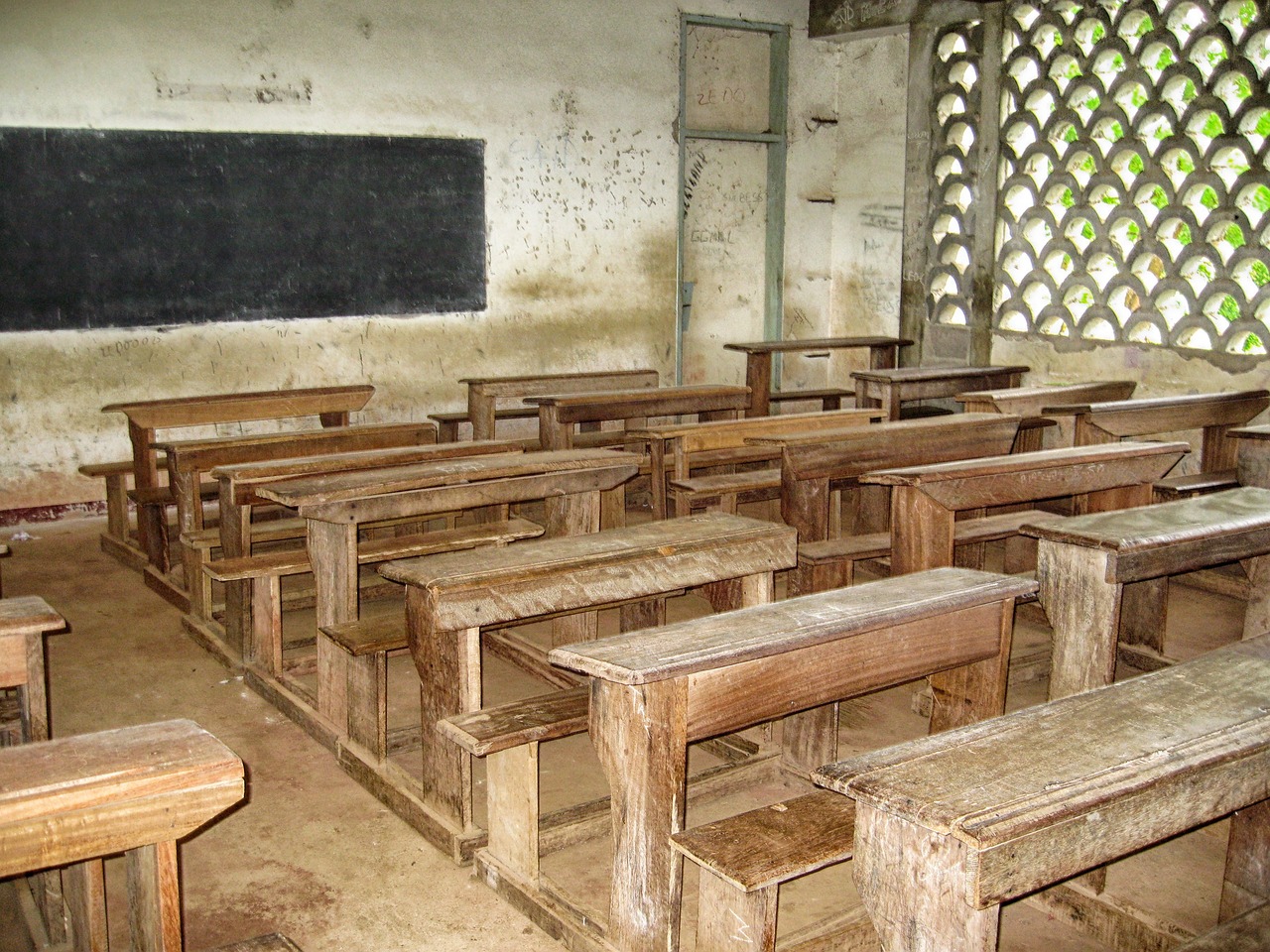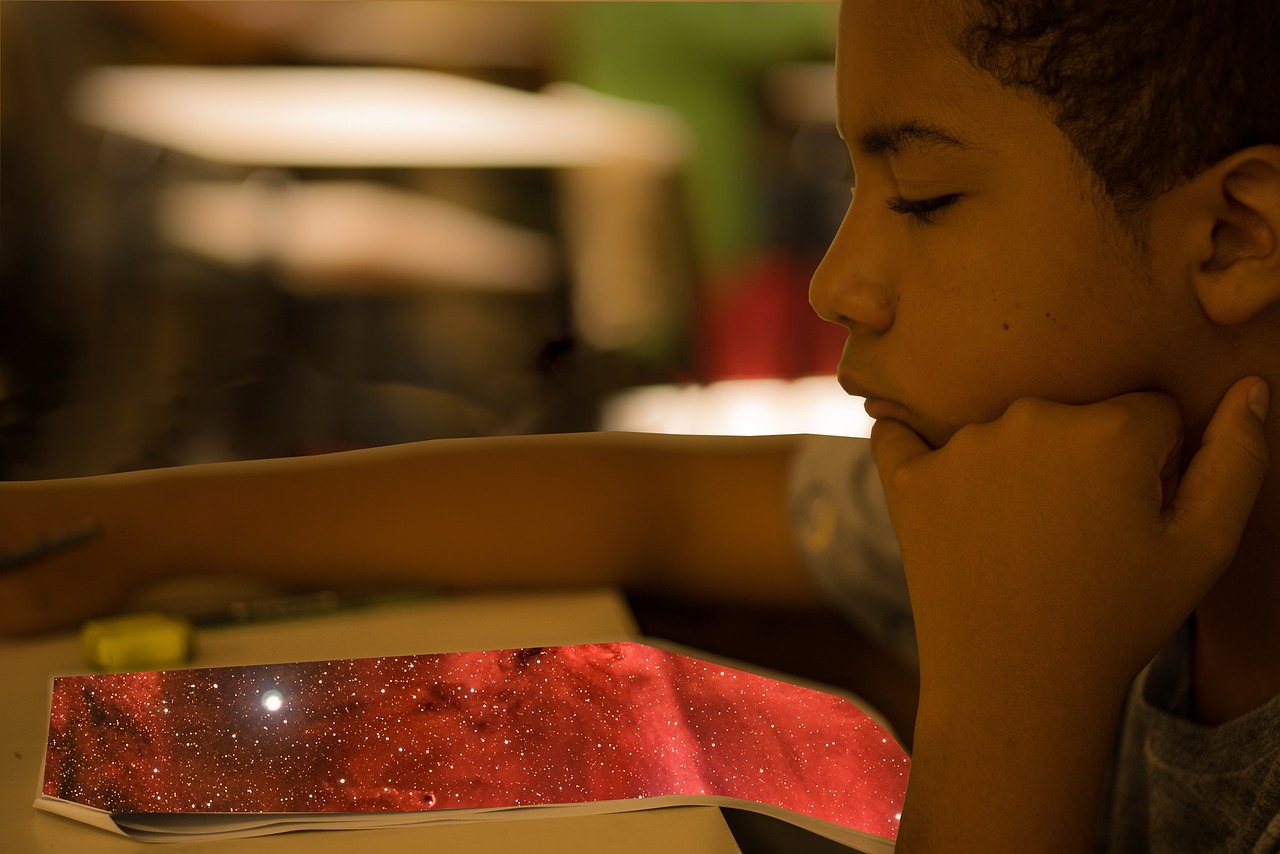How to Create a Fun and Engaging Learning Space
Creating a fun and engaging learning space is essential for fostering a positive and interactive educational environment. By incorporating various elements that stimulate creativity and encourage active participation, educators can enhance the overall learning experience for students. From colorful decor to flexible seating arrangements, interactive learning stations, and the integration of technology, there are numerous strategies to consider when designing a dynamic classroom setting.
One key aspect of creating an engaging learning space is the use of colorful and stimulating decor. By incorporating vibrant colors and interactive elements into the classroom design, educators can create an inspiring atmosphere that captures students' attention and promotes creativity. Visual stimuli play a crucial role in engaging learners and setting a positive tone for the educational experience.
Flexible seating arrangements are another important consideration when designing a dynamic learning space. Providing students with options such as bean bags, standing desks, and floor cushions can enhance comfort and engagement, allowing them to choose seating that best suits their learning style and preferences. This flexibility promotes movement and active participation, contributing to a more interactive and engaging classroom environment.
Interactive learning stations offer opportunities for hands-on exploration and discovery, fostering a sense of curiosity and engagement among students. By setting up various stations with educational games and activities, educators can create dynamic learning experiences that encourage independent exploration and collaborative learning. These interactive elements help keep students actively engaged and motivated to participate in the learning process.
Integrating technology into the learning space is another effective way to enhance student engagement and create a dynamic educational environment. By incorporating digital tools such as interactive whiteboards, tablets, and educational apps, educators can provide interactive learning experiences that cater to different learning styles and preferences. Technology offers opportunities for interactive learning, personalized instruction, and real-time feedback, enriching the overall learning experience for students.
Natural lighting and greenery can also have a significant impact on the learning environment, influencing student mood, focus, and overall well-being. Maximizing natural light exposure and incorporating indoor plants into the classroom design can create a more inviting and energizing space for learning. A well-lit and green environment can enhance student productivity, reduce stress, and promote a positive learning atmosphere.
Personalized learning spaces that cater to individual student needs and preferences are essential for promoting autonomy and self-directed learning. By creating designated areas where students can work independently or in small groups based on their interests and learning goals, educators can empower students to take ownership of their learning journey. Personalized spaces encourage autonomy, creativity, and collaboration, fostering a sense of ownership and engagement among students.
Designing an inclusive and accessible learning space is crucial for ensuring that all students feel welcome and supported in the educational environment. By considering the diverse needs and learning styles of students, educators can create a space that is accommodating and inclusive for everyone. An accessible design promotes equity, diversity, and inclusion, fostering a sense of belonging and community among students.
Collaborative and creative zones within the learning space provide opportunities for students to collaborate, share ideas, and engage in hands-on, creative activities. By designating areas where students can work together on projects, brainstorm ideas, and explore their creativity, educators can foster a culture of collaboration and innovation. These zones promote teamwork, communication, and critical thinking skills, enhancing the overall learning experience for students.

Colorful and Stimulating Decor
Tips and strategies for designing an educational environment that promotes active learning and student engagement.
When it comes to creating a vibrant and inspiring learning space, colorful and stimulating decor plays a crucial role. Imagine walking into a classroom filled with bright hues and interactive elements that immediately capture your attention. The use of vibrant colors such as blues, greens, and yellows can evoke a sense of energy and creativity, making the environment more engaging for students. Incorporating educational posters, wall decals, and artwork can also add visual interest and provide valuable learning cues.
Moreover, interactive elements like sensory boards, interactive displays, and themed corners can ignite curiosity and encourage exploration. These elements not only make the space visually appealing but also create opportunities for hands-on learning experiences. By incorporating a variety of textures, shapes, and patterns, you can stimulate the senses and create a multi-sensory learning environment that caters to different learning styles.
Additionally, consider using furniture and decor items that are not only visually appealing but also functional. Bean bags, floor cushions, and flexible seating options can provide students with comfortable and dynamic spaces to learn and collaborate. By creating a balance between aesthetics and functionality, you can design a learning space that is both visually stimulating and conducive to active engagement.
Remember, the goal of colorful and stimulating decor is to create an environment that sparks creativity, curiosity, and excitement. By thoughtfully incorporating these elements into your learning space, you can inspire a sense of wonder and joy in students, making learning a truly immersive and enjoyable experience.

Flexible Seating Arrangements
Tips and strategies for designing an educational environment that promotes active learning and student engagement.
When it comes to creating a dynamic learning environment, play a crucial role in enhancing student comfort and engagement. Gone are the days of rigid rows of desks; today, educators are embracing the idea of versatile seating options that cater to the diverse needs of learners.
Imagine a classroom where students have the freedom to choose where and how they sit. From cozy bean bags to standing desks and comfy floor cushions, the possibilities are endless. Such flexibility not only promotes better posture and physical well-being but also encourages active participation and collaboration among students.
By offering a variety of seating choices, educators can empower students to find the setup that works best for them. Some may prefer a quiet corner for focused individual work, while others thrive in a more social setting where they can easily interact with peers. This personalized approach to seating helps create a supportive and inclusive learning environment where every student feels valued.
Moreover, flexible seating arrangements can stimulate creativity and boost productivity. When students are comfortable and at ease in their learning space, they are more likely to stay focused, engaged, and motivated. It's like giving them the freedom to choose their own adventure, leading to a more enriching and enjoyable educational experience.
Ultimately, by embracing the concept of flexible seating arrangements, educators can transform traditional classrooms into dynamically engaging spaces that cater to the diverse needs and preferences of students, fostering a culture of active learning and collaboration.

Interactive Learning Stations
Tips and strategies for designing an educational environment that promotes active learning and student engagement.
Interactive learning stations are a fantastic way to foster engagement and curiosity in students. These stations are designed to provide hands-on activities and educational games that encourage exploration and discovery. By setting up interactive learning stations, students can actively participate in their learning process, making education more enjoyable and effective.
Imagine a station where students can conduct science experiments, another where they can solve puzzles related to the lesson, and yet another where they can engage in role-playing activities. Each station offers a unique learning experience, catering to different learning styles and preferences.
Additionally, incorporating technology into these stations can further enhance the interactive learning experience. Utilizing tablets with educational apps, interactive whiteboards for visual demonstrations, and even virtual reality tools can make the stations even more engaging and immersive for students.
Moreover, interactive learning stations promote collaboration and critical thinking skills as students work together to solve problems and complete tasks. These stations create a dynamic learning environment where students are actively involved in their education, leading to better retention of information and a deeper understanding of the subject matter.
By incorporating interactive learning stations into the classroom, educators can transform traditional teaching methods into a fun and engaging experience that sparks a love for learning in students.

Incorporating Technology
In today's digital age, technology plays a crucial role in enhancing the learning experience for students. By incorporating various digital tools into the classroom, educators can create a dynamic and interactive environment that caters to diverse learning styles. Interactive whiteboards, for example, allow teachers to present information in a visually engaging way, making lessons more interactive and stimulating. Tablets provide students with access to a wealth of educational resources and apps, enabling personalized learning experiences tailored to individual needs. Additionally, educational apps can gamify the learning process, making it more engaging and enjoyable for students.

Natural Lighting and Greenery
When it comes to designing a learning environment that fosters creativity and engagement, the impact of natural lighting and greenery cannot be overstated. Imagine a classroom bathed in the warm glow of sunlight streaming through large windows, with lush green plants dotted around the room like little pockets of nature. This setting creates a welcoming and refreshing atmosphere that can significantly enhance students' mood and overall well-being.
Studies have shown that exposure to natural light can improve concentration, alertness, and productivity. By incorporating large windows or skylights in the learning space, you can harness the power of natural light to create a bright and inviting atmosphere that energizes students and promotes a positive learning environment. Additionally, the presence of indoor plants can help purify the air, reduce stress, and increase feelings of calmness and relaxation.
Imagine students sitting at their desks, surrounded by vibrant greenery, as they immerse themselves in their studies. The combination of natural light and greenery not only enhances the aesthetics of the learning space but also has a profound impact on students' cognitive function and emotional well-being.
Furthermore, the presence of plants can serve as a valuable teaching tool, allowing students to learn about biology, ecology, and the importance of environmental conservation in a hands-on and interactive way. By creating a learning environment that incorporates natural elements, you are not only enhancing the physical space but also providing students with a holistic and enriching educational experience.
Embracing natural lighting and greenery in the learning space is a simple yet powerful way to create a dynamic and inspiring environment that promotes student engagement, creativity, and overall well-being.

Personalized Learning Spaces
When it comes to creating a truly engaging and effective learning environment, personalized learning spaces play a crucial role. These spaces are tailored to meet the individual needs and preferences of students, allowing them to work in a way that best suits their learning style. By providing personalized learning spaces, educators can empower students to take ownership of their learning journey and foster a sense of independence and responsibility.
Imagine a classroom where each student has a designated area that reflects their unique personality and learning preferences. Some students may thrive in a quiet corner with a comfortable chair and a desk, while others may prefer a collaborative space with bean bags and floor cushions for group work. By offering a variety of personalized learning spaces, educators can cater to the diverse needs of their students and create a more inclusive and engaging learning environment.
Furthermore, personalized learning spaces can enhance student motivation and productivity. When students feel that they have a space that is their own, they are more likely to feel a sense of belonging and ownership. This can lead to increased focus, creativity, and overall satisfaction with the learning process. By allowing students to personalize their learning spaces with items that inspire and motivate them, educators can create a dynamic and stimulating environment that promotes active engagement and learning.
Incorporating elements of choice and autonomy into the design of personalized learning spaces can also boost student agency and self-regulation. When students have the freedom to select where and how they work, they are more likely to take responsibility for their learning and develop important skills such as time management and self-discipline. By fostering a sense of independence and agency through personalized learning spaces, educators can empower students to become self-directed learners who are actively engaged in their education.

Inclusive and Accessible Design
Creating an inclusive and accessible learning environment is crucial to ensure that all students, regardless of their abilities or learning styles, feel welcomed and supported. By designing the space with diversity in mind, educators can promote equal opportunities for every student to thrive and succeed.
One way to achieve inclusive design is by incorporating universal design principles that cater to a wide range of needs. This can involve providing multisensory materials for students with different learning preferences, ensuring adequate space for wheelchair users to navigate freely, and implementing visual cues for students with hearing impairments.
Moreover, flexible furniture arrangements can accommodate students with physical disabilities and create a welcoming atmosphere for everyone. Adjustable desks, ergonomic chairs, and clear pathways can make the learning space accessible and comfortable for all.
Consider incorporating assistive technologies such as screen readers, captioning services, and speech recognition software to support students with disabilities. By embracing technology, educators can empower every student to participate fully in the learning process.
Another essential aspect of inclusive design is promoting diversity and representation in the learning environment. Displaying inclusive imagery in posters, books, and educational materials can foster a sense of belonging and celebrate the uniqueness of each student.
By prioritizing inclusivity and accessibility in the design of the learning space, educators can create a supportive and empowering environment where every student can thrive and reach their full potential.

Collaborative and Creative Zones
When it comes to fostering collaboration and nurturing creativity in a learning environment, creating dedicated zones can significantly enhance the overall experience for students. These zones serve as designated areas where students can come together to work on projects, exchange ideas, and engage in hands-on, creative activities. By providing spaces specifically designed for collaboration and creativity, educators can promote teamwork, communication, and innovation among students.
Collaborative zones are essential for encouraging peer-to-peer learning and fostering a sense of community within the classroom. These areas can be equipped with tools and resources that facilitate group work, such as whiteboards, project supplies, and comfortable seating arrangements. By establishing a space where students can collaborate effectively, educators can empower them to learn from one another, share perspectives, and collectively solve problems.
On the other hand, creative zones are designed to inspire imagination and innovation among students. These areas can be filled with art supplies, craft materials, and interactive tools that encourage self-expression and exploration. By providing a dedicated space for creative activities, educators can stimulate students' artistic abilities, critical thinking skills, and problem-solving capabilities.
Furthermore, collaborative and creative zones can be versatile environments that cater to a wide range of learning styles and preferences. Students who thrive in group settings can utilize collaborative zones to engage in discussions, brainstorm ideas, and work on collaborative projects. Meanwhile, students who prefer independent work can retreat to creative zones to explore their creativity, experiment with different mediums, and pursue personal interests.
By incorporating collaborative and creative zones into the learning space, educators can create a dynamic and interactive environment that promotes collaboration, creativity, and student engagement. These zones not only encourage teamwork and innovation but also provide students with the opportunity to express themselves, explore new ideas, and develop essential skills for success in the modern world.
Frequently Asked Questions
- What are the benefits of using colorful and stimulating decor in a learning space?
Colorful decor can create an inspiring and visually appealing atmosphere that stimulates creativity and enhances mood. It can also help in creating a lively and engaging environment that fosters active learning.
- How can flexible seating arrangements contribute to student engagement?
Flexible seating options like bean bags and standing desks provide students with comfort and choice, allowing them to select a seating arrangement that best suits their learning style. This can lead to increased focus, collaboration, and overall engagement in the learning process.
- Why is it important to incorporate technology into the learning space?
Integrating technology tools like interactive whiteboards and educational apps can enhance the learning experience by making lessons more interactive, engaging, and personalized. It also helps students develop digital literacy skills essential for the modern world.
- How can personalized learning spaces benefit students?
Personalized learning spaces allow students to work in environments tailored to their preferences and needs, promoting independence, autonomy, and a sense of ownership over their learning. This can lead to increased motivation and academic success.
- What does inclusive and accessible design entail in a learning environment?
Inclusive design ensures that the learning space is welcoming and accommodating for students of all abilities and learning styles. It involves creating an environment where every student feels valued, respected, and supported in their educational journey.



















